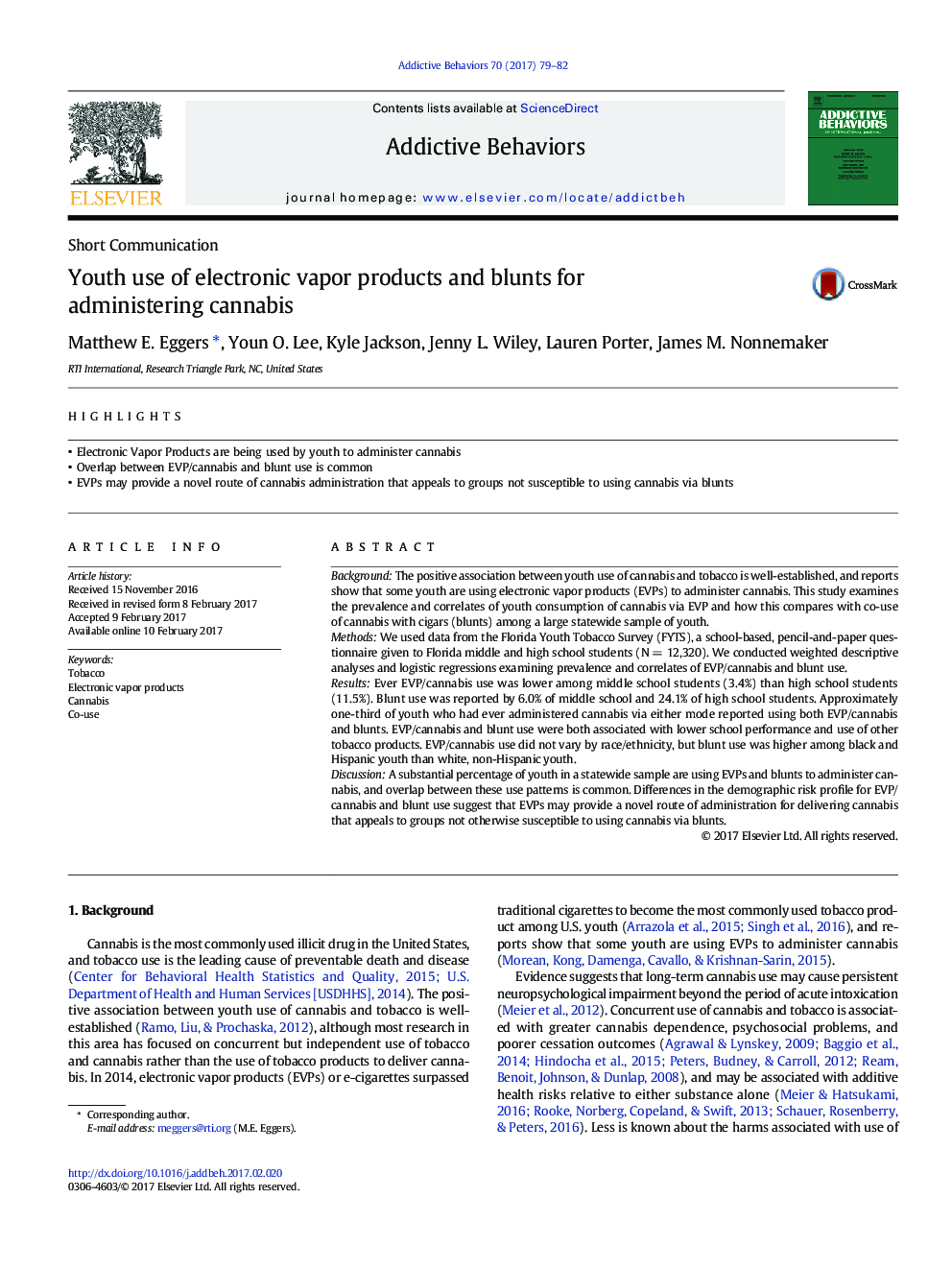| Article ID | Journal | Published Year | Pages | File Type |
|---|---|---|---|---|
| 5037827 | Addictive Behaviors | 2017 | 4 Pages |
â¢Electronic Vapor Products are being used by youth to administer cannabisâ¢Overlap between EVP/cannabis and blunt use is commonâ¢EVPs may provide a novel route of cannabis administration that appeals to groups not susceptible to using cannabis via blunts
BackgroundThe positive association between youth use of cannabis and tobacco is well-established, and reports show that some youth are using electronic vapor products (EVPs) to administer cannabis. This study examines the prevalence and correlates of youth consumption of cannabis via EVP and how this compares with co-use of cannabis with cigars (blunts) among a large statewide sample of youth.MethodsWe used data from the Florida Youth Tobacco Survey (FYTS), a school-based, pencil-and-paper questionnaire given to Florida middle and high school students (NÂ =Â 12,320). We conducted weighted descriptive analyses and logistic regressions examining prevalence and correlates of EVP/cannabis and blunt use.ResultsEver EVP/cannabis use was lower among middle school students (3.4%) than high school students (11.5%). Blunt use was reported by 6.0% of middle school and 24.1% of high school students. Approximately one-third of youth who had ever administered cannabis via either mode reported using both EVP/cannabis and blunts. EVP/cannabis and blunt use were both associated with lower school performance and use of other tobacco products. EVP/cannabis use did not vary by race/ethnicity, but blunt use was higher among black and Hispanic youth than white, non-Hispanic youth.DiscussionA substantial percentage of youth in a statewide sample are using EVPs and blunts to administer cannabis, and overlap between these use patterns is common. Differences in the demographic risk profile for EVP/cannabis and blunt use suggest that EVPs may provide a novel route of administration for delivering cannabis that appeals to groups not otherwise susceptible to using cannabis via blunts.
